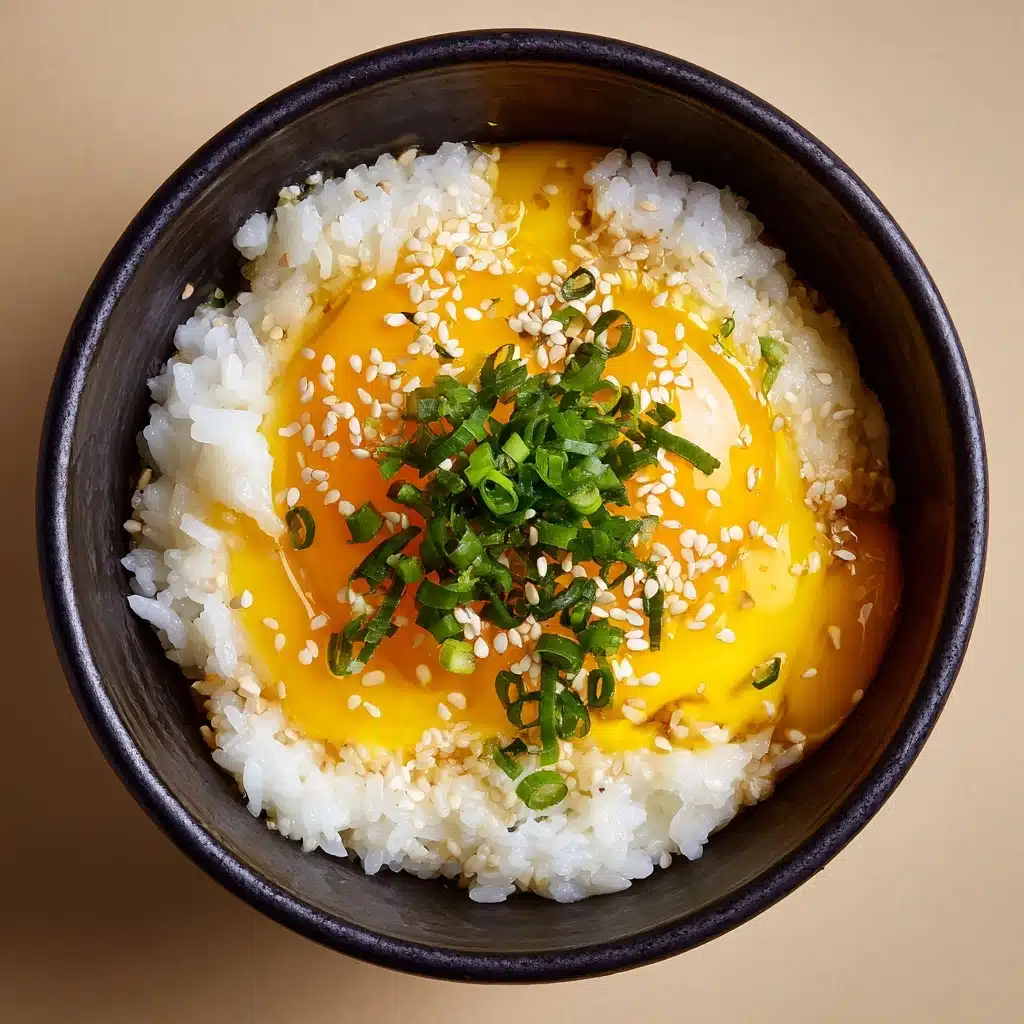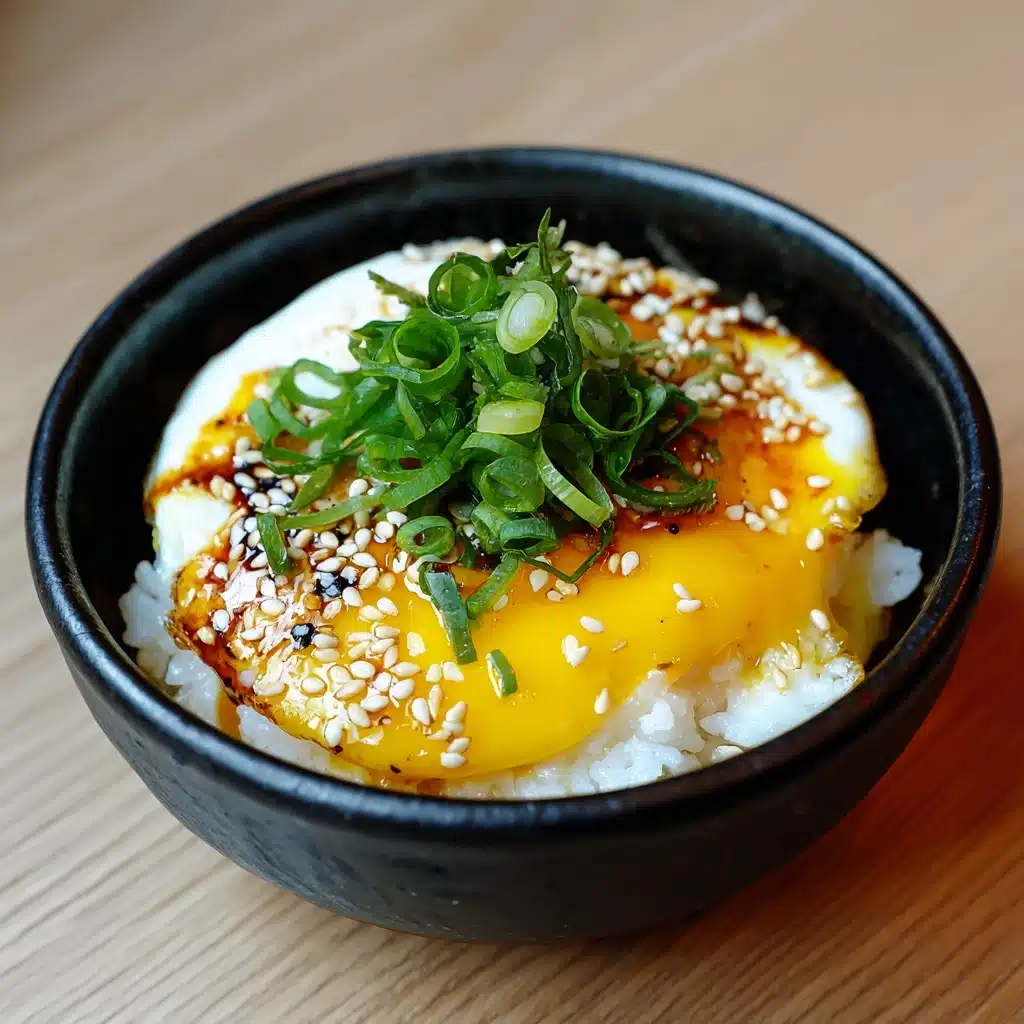Korean Steamed Eggs Recipe
If you’re looking for pure comfort in a bowl, it’s hard to beat the irresistible simplicity and magic of Korean Steamed Eggs. Silky, savory, and cloud-like, this homey dish (called gyeran jjim in Korea) is almost impossibly easy to make — yet the result feels like a warm, gentle hug from someone who loves you. Whether you want an easy side, a protein-rich breakfast, or something to round out a Korean meal, Korean Steamed Eggs are always a good idea for a quick, nourishing, and soul-soothing bite.

Ingredients You’ll Need
One of the best things about Korean Steamed Eggs is their ingredient list: short, sweet, and totally accessible. Every single addition plays an important role, either adding flavor, bumping up the texture, or delivering a pop of color that transforms these eggs from simple to spectacular.
- 4 large eggs: The main star — they’re what make this dish so wonderfully light and fluffy.
- 1 cup water or anchovy-kelp broth: Water works perfectly, but an anchovy-kelp broth lends truly authentic flavor and umami depth.
- ¼ teaspoon salt (or to taste): Essential for bringing all the flavors together — adjust if your broth is already salty.
- ½ teaspoon sesame oil: Adds a nutty fragrance and beautiful sheen to the finished dish.
- 1 green onion, finely chopped: Delivers a fresh, aromatic crunch and that bright pop of green color.
- Toasted sesame seeds (optional, for garnish): A sprinkle at the end for texture and extra nutty flavor.
How to Make Korean Steamed Eggs
Step 1: Whisk and Combine
Begin by cracking the eggs into a heat-safe bowl or a traditional Korean ttukbaegi. Add your cup of water or broth, and sprinkle in the salt. Whisk everything together until the yolks and whites are completely unified and the mixture looks no-streak, creamy, and pale yellow. For the absolutely silkiest Korean Steamed Eggs, run this mixture through a fine mesh sieve. It’s optional, but the extra minute is totally worth it.
Step 2: Get Steamy
Set up your steaming station. Whether you’re using a steamer basket, a double boiler, or even the stovetop with a ttukbaegi, place your bowl of whisked eggs into the setup. Loosely cover the bowl with a lid or foil—this crucial step keeps water droplets from falling into your eggs and making the texture watery. Steaming on medium-low heat is the trick to that signature fluffy, wobbly texture.
Step 3: Steam to Perfection
Let your Korean Steamed Eggs cook gently for 10 to 15 minutes. You’ll know they’re ready when the eggs are puffed, softly set, and still a little jiggly in the center (like a custard). Don’t overdo it! Once set, carefully remove the bowl from the steamer — it’ll be hot and delicate.
Step 4: Finish with Fragrance
As soon as your Korean Steamed Eggs are done, drizzle on the sesame oil so it melts right into the surface. Scatter over the chopped green onions and, if you like, a pinch of toasted sesame seeds. The aroma that hits you at this point is pure heaven.
How to Serve Korean Steamed Eggs

Garnishes
Garnishing is your chance to personalize Korean Steamed Eggs, adding color, crunch, or even a little extra pizzazz. Classic choices are finely sliced green onions and a swirl of sesame oil, but a sprinkle of toasted sesame seeds or a few red pepper flakes can add just the right touch of shimmer and spice.
Side Dishes
With their delicate flavor, these eggs are perfect alongside hot steamed rice, crisp kimchi, or a spread of simple banchan (Korean side dishes). The creamy protein of Korean Steamed Eggs makes them a beautiful complement to spicy stews, grilled meats, or even something as humble as stir-fried vegetables.
Creative Ways to Present
For a little wow-factor, serve Korean Steamed Eggs in single-serve ramekins, Japanese chawanmushi cups, or the traditional ttukbaegi for an authentic touch. Play with layering cooked seafood, edamame, or a pinch of chili on top for extra personality and nutrition—kids love it, and grown-ups are always impressed!
Make Ahead and Storage
Storing Leftovers
Korean Steamed Eggs are best hot and fresh, but leftovers can easily be stored for up to two days. Simply cover the bowl with plastic wrap or transfer to an airtight container and refrigerate. The texture firms a little but it’s still tasty!
Freezing
Freezing is not recommended for Korean Steamed Eggs, as the delicate, custardy texture doesn’t hold up well after thawing. You’ll lose that signature silkiness—so try to enjoy this lovely dish within a day or two of making it.
Reheating
For the gentlest reheating, use the steamer or microwave. If you microwave, cover lightly and heat in short bursts, checking every 15–20 seconds so the eggs don’t overcook or dry out. Adding a tiny splash of water or broth before reheating helps restore some moisture.
FAQs
Can I add other ingredients to Korean Steamed Eggs?
Absolutely! While the classic is beloved for its simple purity, adding small bits of cooked seafood, mushrooms, or diced vegetables can give your Korean Steamed Eggs new flavors and colors. Just make sure any additions are pre-cooked and chopped finely to keep the texture smooth.
What if I don’t have a steamer?
No problem at all! Place the egg mixture bowl in a pot with about an inch of simmering water, making sure the bowl sits above the water (not touching). Cover tightly and steam as directed. Just keep an eye on the water level so it doesn’t run dry.
How do I prevent the eggs from becoming watery?
For the creamiest Korean Steamed Eggs, be sure to cover the bowl well while steaming so condensation doesn’t drip in. Also, avoid over-steaming, which can break the custard and release moisture. Using a fine mesh strainer to whisked eggs before cooking can lead to an extra velvety result.
Can I make Korean Steamed Eggs in the microwave?
Yes! Whisk the ingredients as usual, pour into a microwave-safe bowl, and cover with a microwave-safe plate. Cook in 30-second intervals at medium power, stirring gently in between, until they’re softly set. Keep a close eye—microwaves vary, and you want just-set, not rubbery, eggs!
What is the difference between Korean Steamed Eggs and Japanese Chawanmushi?
The technique is similar, but chawanmushi uses dashi broth and often includes seafood or vegetables inside, creating a more savory, layered dish. Korean Steamed Eggs are typically simpler, fluffier, and seasoned with sesame oil for a distinctly nutty aroma.
Final Thoughts
If you’ve been searching for a comforting, quick, and endlessly customizable dish, Korean Steamed Eggs are about to become your new favorite go-to recipe. Give them a try—you’ll be amazed by what a few simple ingredients can create, and they might just become a beloved staple in your kitchen too!
Print
Korean Steamed Eggs Recipe
- Total Time: 20 minutes
- Yield: 2 servings 1x
- Diet: Vegetarian
Description
Learn how to make delicious and fluffy Korean Steamed Eggs with this easy recipe. Perfect as a side dish or light meal, these eggs are steamed to perfection and infused with savory flavors.
Ingredients
Eggs:
- 4 large eggs
Broth:
- 1 cup water or anchovy-kelp broth
Seasoning:
- ¼ teaspoon salt (or to taste)
- ½ teaspoon sesame oil
- 1 green onion (finely chopped)
- toasted sesame seeds (optional, for garnish)
Instructions
- Prepare Egg Mixture: Whisk together eggs, water or broth, and salt until smooth. Strain through a sieve for a silkier texture.
- Steam Eggs: Place bowl in a steamer or double boiler, cover, and steam for 10-15 minutes until set.
- Finish and Serve: Drizzle with sesame oil, garnish with green onions and sesame seeds. Serve hot with rice.
Notes
- Enhance flavor with anchovy-kelp broth
- Adjust salt based on broth
- Traditional cooking in ttukbaegi on stovetop is an option
- Prep Time: 5 minutes
- Cook Time: 15 minutes
- Category: Side Dish
- Method: Steaming
- Cuisine: Korean
Nutrition
- Serving Size: 1 bowl
- Calories: 120
- Sugar: 1 g
- Sodium: 290 mg
- Fat: 8 g
- Saturated Fat: 2 g
- Unsaturated Fat: 5 g
- Trans Fat: 0 g
- Carbohydrates: 1 g
- Fiber: 0 g
- Protein: 10 g
- Cholesterol: 215 mg






